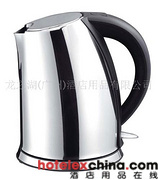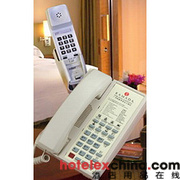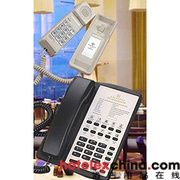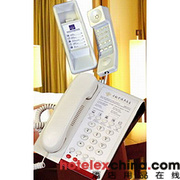Guests bring on average three mobile devices when checking into a hotel. They expect all of those devices to connect quickly and work extremely well whether they are responding to emails, streaming movies or video chatting. If that connectivity is slow, spotty or nonexistent, guest satisfaction is guaranteed to take a nose-dive. We asked the connectivity experts and here are six mistakes that hotels make when it comes to Wi-Fi on their property.
1. Insufficient access points (APs). This is perhaps the biggest problem that the experts agreed on. Enough APs are needed to sustain high-bandwidth applications, such as over-the-top video, said Roy Kosuge, SVP corporate strategy, Sonifi Solutions. “The reason is often budgetary,” he said. “Wi-Fi access points are the most expensive component of the guest internet infrastructure upgrade. Installing too few results in gaps in coverage, as well as lack of bandwidth for apps like Netflix.”
The quantity and placement of wireless access points is the most obvious aspect of reactionary design, said Jason Claybrook, senior manager, marketing and business development for Samsung Networks. Those budget constraints result in a wireless fabric permeated with signal issues. Unfortunately, issues such as coverage gaps are left to hotel guests to discover.
“As a result, problem solving and remediation is often just ‘throwing’ more APs at issues as they are identified instead of having a solution that can solve simple problems,” Claybrook said. “A network that is self-organizing and has machine-learning capabilities and artificial intelligence would solve many connectivity issues by isolating and repairing fault conditions such as radius time-outs.”
Kosuge also recommends investing now today to future-proof the property. “Working with a skilled provider that can help design a network that balances cost and coverage will ensure strong guest satisfaction,” he said.
2. Cheap products. Due to many users with high needs, the capacity needs to be there. “A conference space in a hotel can hold in excess of 200 concurrent users,” said Vijay Patil, network engineer with GX2 Technology. “Higher-end access points are designed to handle this type of load, hence the reason they are significantly more expensive than ones that are bought at a local electronic store. Plus, these type of APs allow for roaming and signal changing to help optimize load balancing and minimize interference.”
3. Not having enough bandwidth. Hotels can have the best design and best hardware, but if there isn't enough bandwidth to service the entire property, it will be a bad guest Wi-Fi experience, Patil said. “Some locations getting bandwidth in is a problem, so bandwidth-shaping techniques must be used to help overcome the lack of speed,” he continued.
4. Lack of data analytics and guest insights. As property owners know, Wi-Fi can be the No. 1 reason that guests don’t return to a property, directly impacting revenue per available room, said Michael Jenkins, AT&T associate VP and hospitality practice lead. “Brands, owners and property managers should view Wi-Fi as a platform for guest insights and analytics for marketing opportunities versus only a cost,” he said.
5. Not planning for regular technology upgrades. Hotels should look at Wi-Fi network investments as a four- to five-year life cycle from a technology obsolescence point of view, said Craig Snelgrove, Bulk TV & Internet’s VP of business development. “The explosion of bandwidth utilization and number of devices continues unabated, and new standards and technology grow to meet that demand,” he said. Hotel should consult with a trusted network provider to determine capital planning and upgrade needs.
6. Not taking advantage of cloud solutions to manage Wi-Fi. Guests want a homelike Wi-Fi experience where they are instantly logged onto Wi-Fi upon arrival without cumbersome logins. “Brands need to deliver a consistent, high-performance Wi-Fi but the challenge is that Wi-Fi has historically been managed in a decentralized way with each property selecting its own hardware and service providers,” said Coleen Carey, VP of marketing for Eleven Software. “This made it virtually impossible to deliver consistent Wi-Fi and a single way to authenticate from one property to the next.”
Today’s cloud Wi-Fi-management solutions serve as middleware between the hotel network and other guest information systems like the property-management and customer-relationship-management systems and make it easy to deliver a great guest experience. Real-time dashboards allow for greater visibility and control across all properties.
![[Intelligent Hotel Lock] YGS-9901B](https://zeimg.jiagle.com/media/2016/11/24/6037221479970596.jpg!180)








Service Hotline
Work Time:Mon-Fri 9:00-18:00
UTC+8

Sinoexpo Digital Platform
Copyright 2006-2024 Shanghai Sinoexpo Informa Markets International Exhibition Co., Ltd. All rights reserved
沪ICP备05034851号-77
 沪公网安备 31010402000543号
沪公网安备 31010402000543号